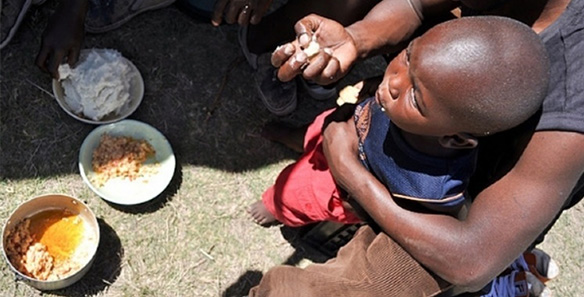Mozambique: Cabo Delgado wants to revive Covid-19 protocol to curb mpox cases - Watch
Chronic malnutrition costs Mozambique more than 62 billion meticais a year

O País
In November 2011, Gloria gave birth to her fifth child. When first weighed, Boane Health Centre in Maputo province diagnosed the newborn as underweight: she weighed 2.1 kilograms, about 400 grams less than normal.
Seven years went by and she grew up. The energy characteristic of her age does not let her keep still. Active and smiling, we found her running after a ball with her brothers and friends in one of the expanding neighbourhoods in the Mahubo administrative post in Boane district.
Despite being a seemingly normal girl, as a baby, Lydia’s body did not develop like other children her age. “Lídia always had weight problems – I don’t know why. But whenever I went to the hospital, they said that her weight and height did not correspond to her age,” her mother says.
With seven children and responsibility for three grandchildren as well, Gloria, a 41-year-old widow, knows that being unemployed does not make it easier for her to provide food for the household of eleven people.
At the age of seven, Lydia is 1.08 metre tall and weighs 17 kilograms. According to the Ministry of Health’s Reference Book for the Growth of Children and Adolescents, she has moderate to chronic malnutrition.
Like Lidia, many children grow up with chronic malnutrition in Mozambique, without being aware of the consequences of this “invisible problem”. Almost one in two children under five years of age in the country suffers from chronic malnutrition, corresponding to 43 percent of the age group.
Chronic malnutrition is characterised by low height for the child’sage. As normal as the child may appear, their growth is faulty, permanently impairing the development of cognitive abilities, and later increasing the risk of chronic diseases such as diabetes and hypertension.
At 7:00 a.m. on weekdays, Lídia is in Room 7 of the Mahubo Kilometer 14 Complete Primary School. On the day that O País came to see her at school, teacher ngelo Assane was teaching Grade 1 children the vowels, a basic element of reading.
Contrary to what her family and friends know her, , Lídia is timid in school. Called to the board to read the vowels out loud to her classmates, she has difficulty getting beyond “e”. Silence, and her teacher helps her get to the end.
“She’s shy in class. Often, she has difficulty learning, and when that happens, the teacher has to be patient, so that she does not fall behind in lessons,” her teacher says. Patience is the key to ensuring that difficulties are not a synonym of exclusion for children like Lydia.
“Because they are growing, children have very high nutritional needs, The priority of the organism is the distribution of energy to vital organs first, and then to growth and the brain. If we have energy deficiency at this stage of life, it means that the brain atrophies,” nutritionist Elda Famba of the Department of Nutrition Health at the Ministry of Health explains.
Studies indicate that children with chronic malnutrition suffer from problems such as delayed motor development, auditory development and language, delayed social behaviour, poor learning and a lower intellectual level when compared to other children, even after malnutrition is corrected.
Chronic malnutrition is a problem because it paralyzes the social capital of individuals, families, communities, provinces and entire regions. According to the results of a recent government study, Mozambique could save 62 billion meticais a year in health costs, lost productivity and dropping out of education if malnutrition was overcome.













Leave a Reply
Be the First to Comment!
You must be logged in to post a comment.
You must be logged in to post a comment.